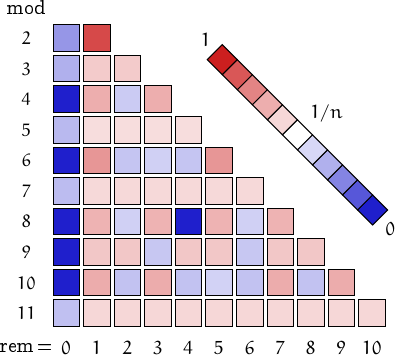The first 600 semiprimes :
4, 6, 9, 10, 14, 15, 21, 22, 25, 26, 33, 34, 35, 38, 39, 46, 49, 51, 55, 57, 58, 62, 65, 69, 74, 77, 82, 85, 86, 87, 91, 93, 94, 95, 106, 111, 115, 118, 119, 121, 122, 123, 129, 133, 134, 141, 142, 143, 145, 146, 155, 158, 159, 161, 166, 169, 177, 178, 183, 185, 187, 194, 201, 202, 203, 205, 206, 209, 213, 214, 215, 217, 218, 219, 221, 226, 235, 237, 247, 249, 253, 254, 259, 262, 265, 267, 274, 278, 287, 289, 291, 295, 298, 299, 301, 302, 303, 305, 309, 314, 319, 321, 323, 326, 327, 329, 334, 335, 339, 341, 346, 355, 358, 361, 362, 365, 371, 377, 381, 382, 386, 391, 393, 394, 395, 398, 403, 407, 411, 413, 415, 417, 422, 427, 437, 445, 446, 447, 451, 453, 454, 458, 466, 469, 471, 473, 478, 481, 482, 485, 489, 493, 497, 501, 502, 505, 511, 514, 515, 517, 519, 526, 527, 529, 533, 535, 537, 538, 542, 543, 545, 551, 553, 554, 559, 562, 565, 566, 573, 579, 581, 583, 586, 589, 591, 597, 611, 614, 622, 623, 626, 629, 633, 634, 635, 649, 655, 662, 667, 669, 671, 674, 679, 681, 685, 687, 689, 694, 695, 697, 698, 699, 703, 706, 707, 713, 717, 718, 721, 723, 731, 734, 737, 745, 746, 749, 753, 755, 758, 763, 766, 767, 771, 778, 779, 781, 785, 789, 791, 793, 794, 799, 802, 803, 807, 813, 815, 817, 818, 831, 835, 838, 841, 842, 843, 849, 851, 862, 865, 866, 869, 871, 878, 879, 886, 889, 893, 895, 898, 899, 901, 905, 913, 914, 917, 921, 922, 923, 926, 933, 934, 939, 943, 949, 951, 955, 958, 959, 961, 965, 973, 974, 979, 982, 985, 989, 993, 995, 998, 1003, 1006, 1007, 1011, 1018, 1027, 1037, 1041, 1042, 1043, 1046, 1047, 1055, 1057, 1059, 1067, 1073, 1077, 1079, 1081, 1082, 1094, 1099, 1101, 1111, 1114, 1115, 1119, 1121, 1126, 1133, 1135, 1137, 1138, 1139, 1141, 1142, 1145, 1147, 1149, 1154, 1157, 1159, 1165, 1167, 1169, 1174, 1177, 1186, 1189, 1191, 1195, 1198, 1199, 1202, 1203, 1205, 1207, 1211, 1214, 1219, 1226, 1227, 1234, 1238, 1241, 1243, 1247, 1253, 1255, 1257, 1261, 1262, 1263, 1267, 1271, 1273, 1282, 1285, 1286, 1293, 1294, 1299, 1306, 1313, 1315, 1317, 1318, 1322, 1329, 1333, 1337, 1339, 1343, 1345, 1346, 1347, 1349, 1351, 1354, 1355, 1357, 1363, 1366, 1369, 1371, 1379, 1382, 1383, 1385, 1387, 1389, 1391, 1393, 1397, 1401, 1402, 1403, 1405, 1411, 1415, 1417, 1418, 1437, 1438, 1441, 1454, 1457, 1461, 1465, 1466, 1469, 1473, 1477, 1478, 1486, 1497, 1501, 1502, 1507, 1509, 1513, 1514, 1517, 1522, 1527, 1529, 1535, 1537, 1538, 1541, 1546, 1555, 1561, 1563, 1565, 1569, 1574, 1577, 1585, 1589, 1591, 1594, 1603, 1618, 1622, 1623, 1631, 1633, 1639, 1641, 1642, 1643, 1646, 1649, 1651, 1654, 1655, 1658, 1661, 1671, 1673, 1678, 1679, 1681, 1685, 1687, 1689, 1691, 1703, 1706, 1707, 1711, 1713, 1714, 1717, 1718, 1726, 1727, 1731, 1735, 1739, 1745, 1751, 1754, 1757, 1761, 1762, 1763, 1765, 1766, 1769, 1774, 1779, 1781, 1793, 1795, 1797, 1799, 1803, 1807, 1814, 1817, 1819, 1821, 1822, 1829, 1835, 1837, 1838, 1839, 1841, 1843, 1849, 1851, 1853, 1857, 1858, 1865, 1874, 1882, 1883, 1891, 1893, 1894, 1895, 1897, 1903, 1906, 1909, 1915, 1919, 1921, 1923, 1927, 1929, 1934, 1937, 1939, 1941, 1942, 1943, 1945, 1954, 1957, 1959, 1961, 1963, 1966, 1967, 1969, 1977, 1981, 1982, 1983, 1985, 1991, 1994, 2005, 2018, 2019, 2021, 2026, 2031, 2033, 2038, 2041, 2042, 2045, 2047, 2049, 2051, 2059, 2062, 2066, 2071, 2073, 2077, 2078, 2095, 2098.
Distribution of the remainders when the numbers in this family are divided by n=2, 3,..., 11. (I took into account 17427258 values, from 4 to 99999997).
| n\r | 0 | 1 | |||||||||
|---|---|---|---|---|---|---|---|---|---|---|---|
| 2 | 3001134 | 14426124 | 2 | ||||||||
| 3 | 2050943 | 7688657 | 7687658 | 3 | |||||||
| 4 | 1 | 7213550 | 3001133 | 7212574 | 4 | ||||||
| 5 | 1270607 | 4039586 | 4038844 | 4038459 | 4039762 | 5 | |||||
| 6 | 1 | 6188004 | 1500480 | 2050942 | 1500653 | 6187178 | 6 | ||||
| 7 | 927432 | 2750583 | 2750154 | 2750174 | 2750241 | 2749712 | 2748962 | 7 | |||
| 8 | 0 | 3607451 | 1500452 | 3606013 | 1 | 3606099 | 1500681 | 3606561 | 8 | ||
| 9 | 1 | 2563260 | 2562417 | 1025180 | 2562401 | 2562741 | 1025762 | 2562996 | 2562500 | 9 | |
| 10 | 1 | 3289191 | 750340 | 3288456 | 750395 | 1270606 | 750395 | 3288504 | 750003 | 3289367 | 10 |
| 11 | 608113 | 1682048 | 1681369 | 1682574 | 1682798 | 1681564 | 1682252 | 1680823 | 1681953 | 1682347 | 1681417 |
A pictorial representation of the table above

Imagine to divide the members of this family by a number n and compute the remainders. Should they be uniformly distributed, each remainder from 0 to n-1 would be obtained in about (1/n)-th of the cases. This outcome is represented by a white square. Reddish (resp. bluish) squares represent remainders which appear more (resp. less) frequently than 1/n.
e-mail: info -at- numbersaplenty.com • Privacy notice • engine limits